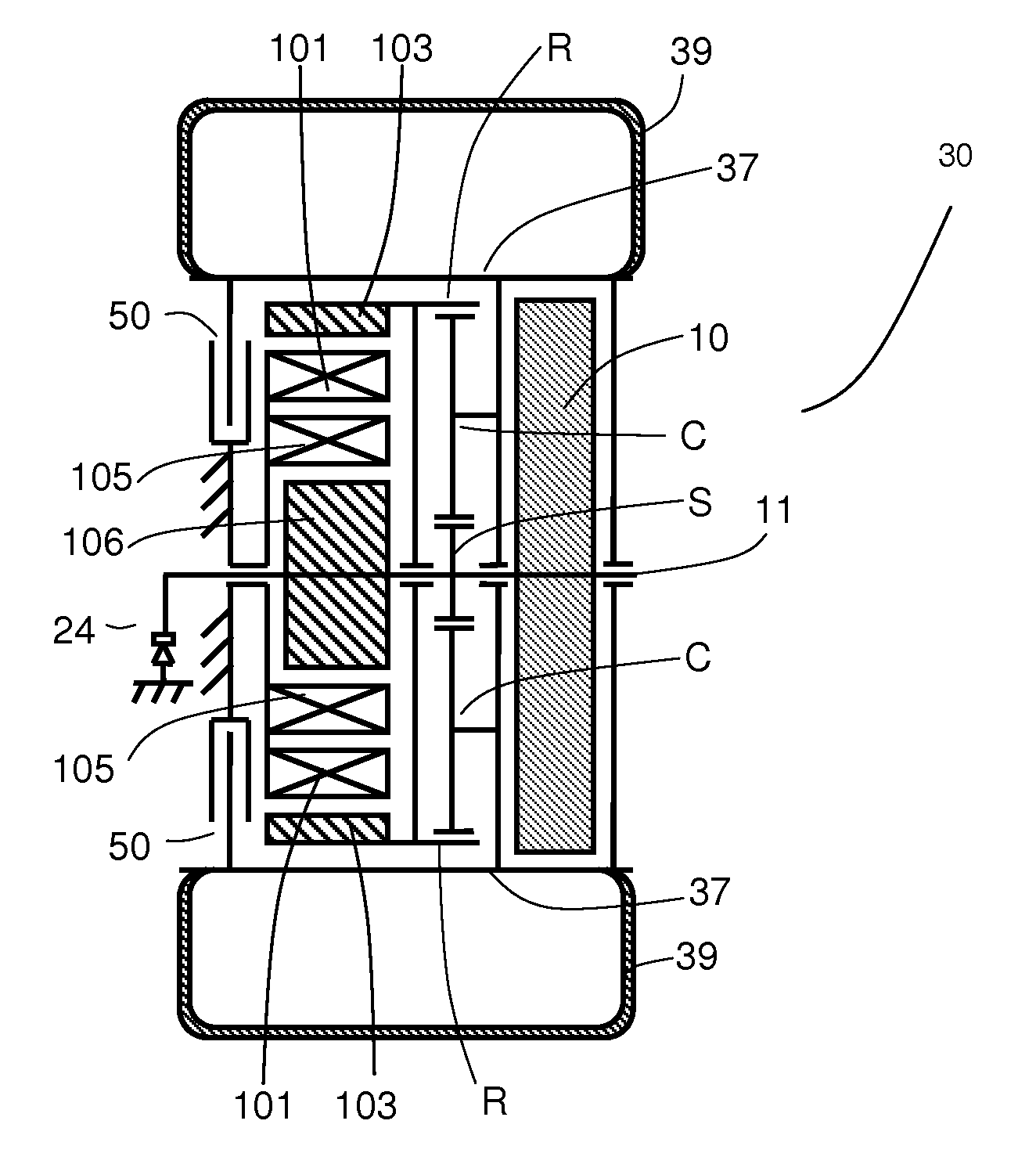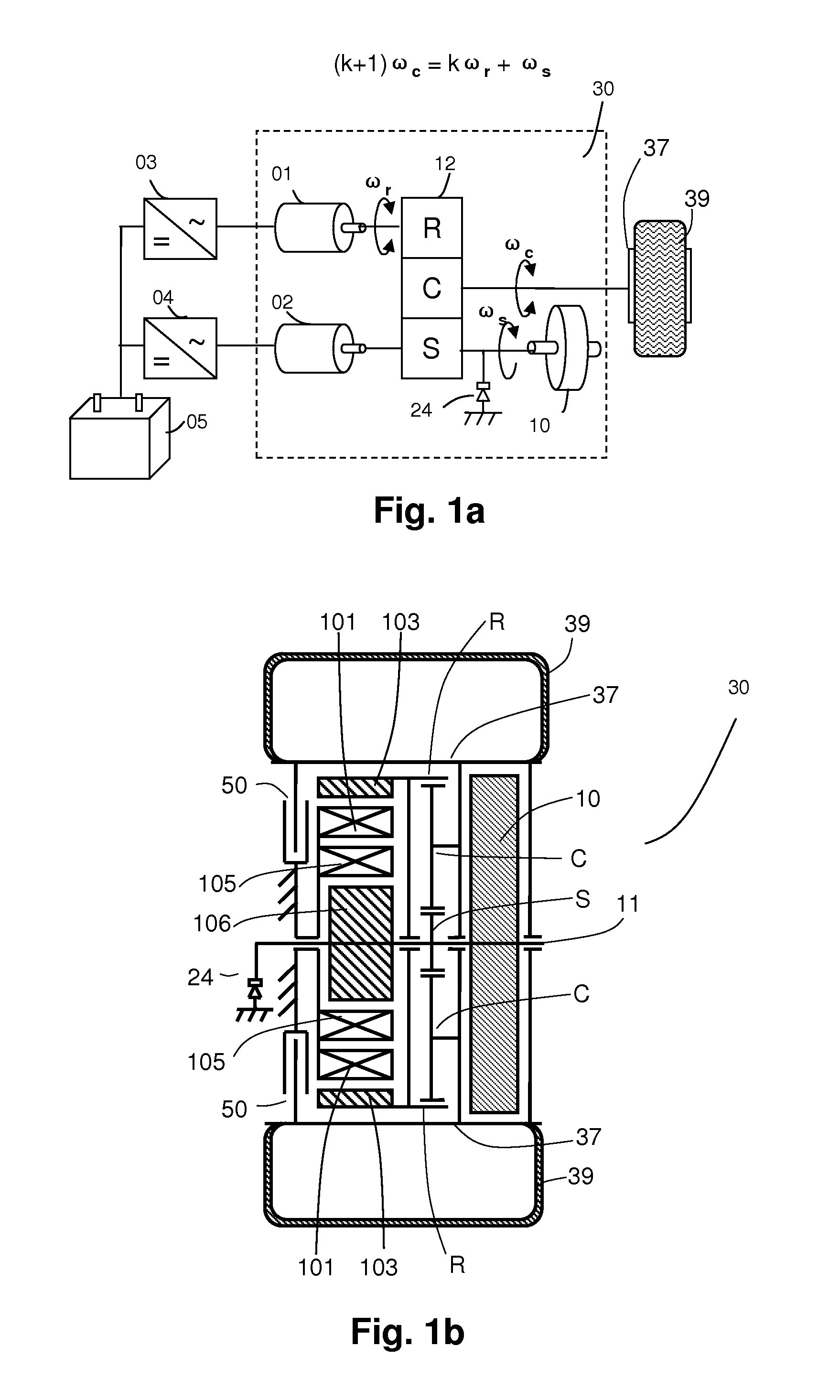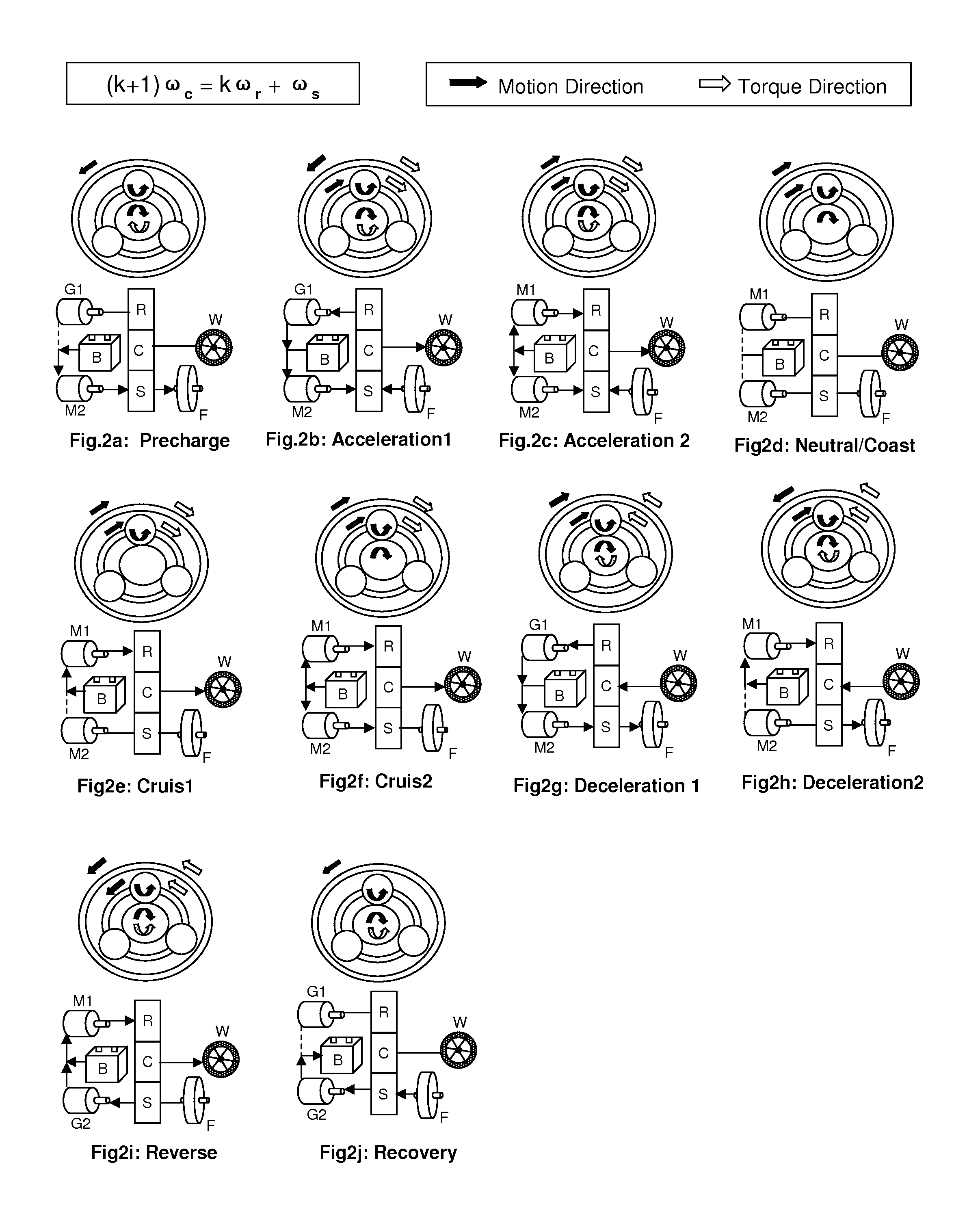Wheel hub flywheel-motor kinetic hybrid system and method
a technology of kinetic hybrid system and flywheel, which is applied in the direction of battery/fuel cell control arrangement, electric devices, propulsion by batteries/cells, etc., can solve the problems of limiting the efficiency of electric vehicles and hybrids, and reducing vehicle performance and acceleration. , the effect of reducing emissions
- Summary
- Abstract
- Description
- Claims
- Application Information
AI Technical Summary
Benefits of technology
Problems solved by technology
Method used
Image
Examples
first embodiment
[0022]FIG. 1(a) is a schematic for the mechanical components of the The planetary gear set 12 connects the flywheel 10, the motor / generators 01 and 02, as well as the wheel rim 37, into a three port kinetic-electric hybrid power-split system. The first port of the planetary gear set 12 (for instance, the sun gear S) connects to the flywheel 10; the second port (for instance, the ring gear R) connects to the variator motor / generator 01; the third port (for instance, the planet carrier C) connects to the wheel rim 37 inside the tire 39. The other motor / generator 02 shares the first port S with the flywheel 10 and a one-way clutch 24, which prevents the flywheel 10 from rotating in the reverse direction. The primary power source is provided by the motor / generators 01 and 02 powered by the battery pack 05 through the controller / inverters 03 and 04, respectively supplying 01 and 02 with energy. The secondary power source and the secondary energy storage are provided by the flywheel 10.
[...
second embodiment
[0053]FIG. 9(b) illustrates the structure of the present invention if a magnetic planetary gear system is used. In this case, the connections among the flywheel 10b, the rotor 103b and stator 101b of the motor / generator 01, and the magnetic gears MS, MR and MC are the same as what was shown in FIG. 8(b). The difference to note here is that the rotor 106b of the motor / generator 02 is connected to the wheel hub 37b and not to the flywheel 10b. FIGS. 9(a) and 9(b) can be controlled to be functionally equivalent.
third embodiment
[0054]FIG. 10(b) depicts a magnetic planetary gear system implementation of the The connections among the flywheel 10b, the rotor 103b and stator 101b of the motor / generator 01, and the magnetic gears MS, MR and MC are the same as in FIGS. 8(b) and 9(b). The difference between the configurations in FIGS. 9(b) and 10(b) is that in FIG. 10(b) the motor / generator 02 has been installed in another wheel hub (not shown). FIGS. 10(a) and 10(b) both show the structure of the group of components represented by 32 in FIG. 4(a). FIG. 10(a) presents a configuration using a mechanical planetary gear system while FIG. 10(b) presents a configuration using a magnetic planetary gear system; the two configurations are functionally equivalent.
[0055]FIG. 10(c) shows an implementation of the second wheel hub of the third embodiment containing the group of components 34c, which includes the motor / generator 02, using a mechanical planetary gear system. FIG. 10(c) is functionally equivalent to the structu...
PUM
 Login to View More
Login to View More Abstract
Description
Claims
Application Information
 Login to View More
Login to View More - R&D
- Intellectual Property
- Life Sciences
- Materials
- Tech Scout
- Unparalleled Data Quality
- Higher Quality Content
- 60% Fewer Hallucinations
Browse by: Latest US Patents, China's latest patents, Technical Efficacy Thesaurus, Application Domain, Technology Topic, Popular Technical Reports.
© 2025 PatSnap. All rights reserved.Legal|Privacy policy|Modern Slavery Act Transparency Statement|Sitemap|About US| Contact US: help@patsnap.com



